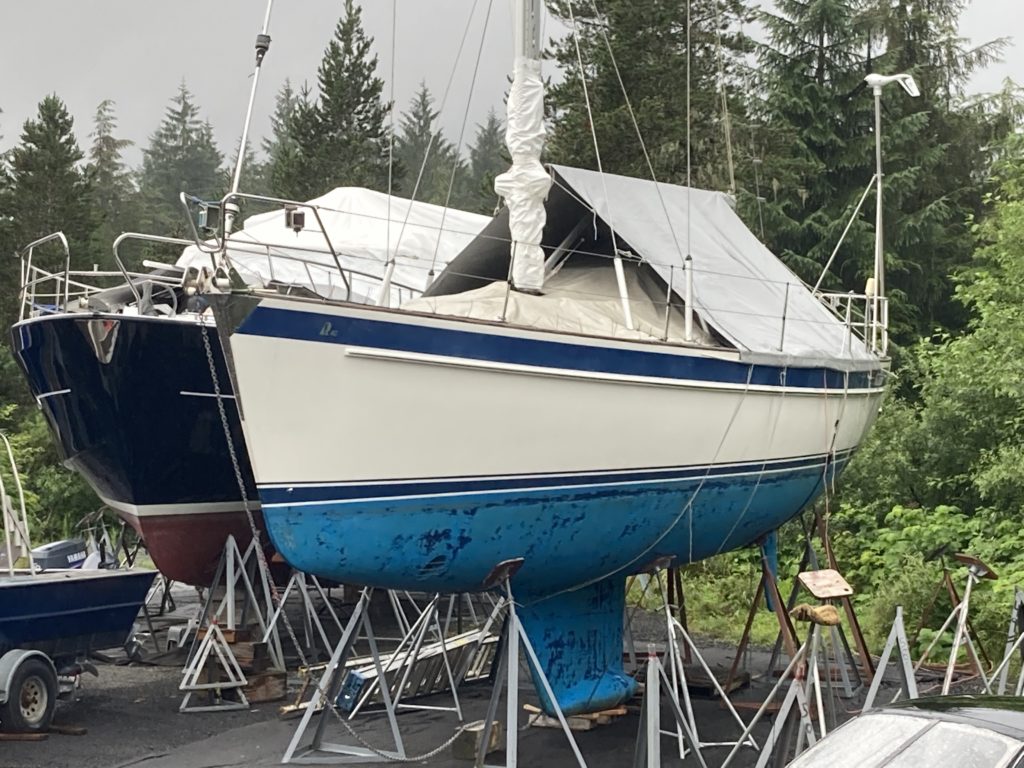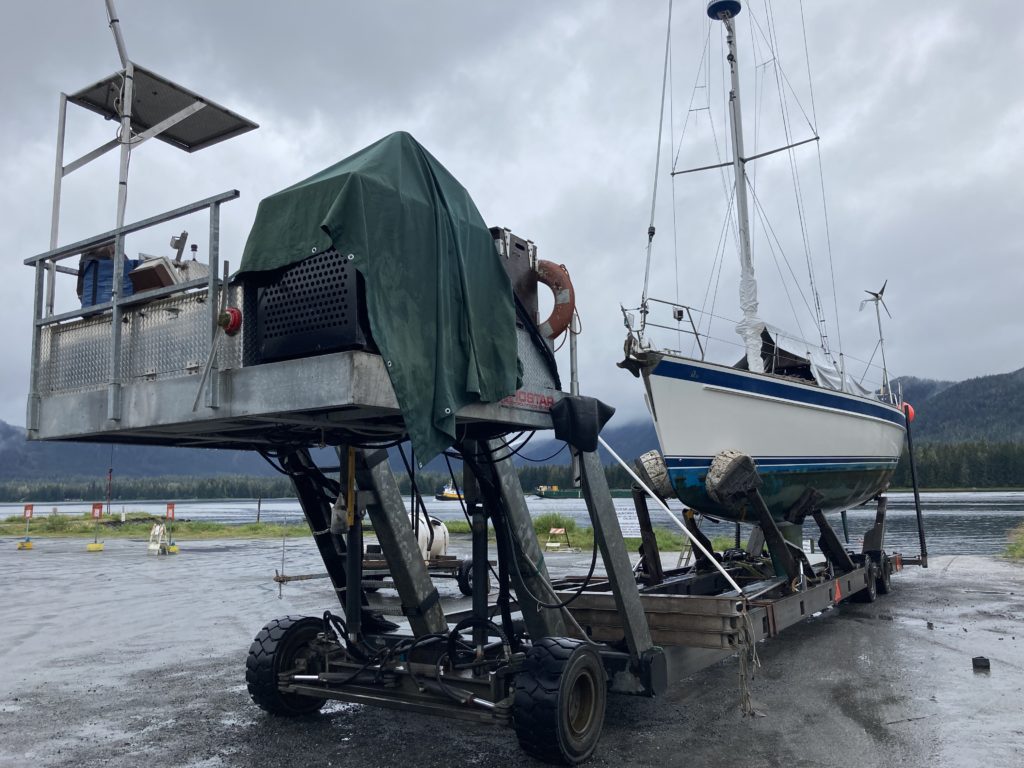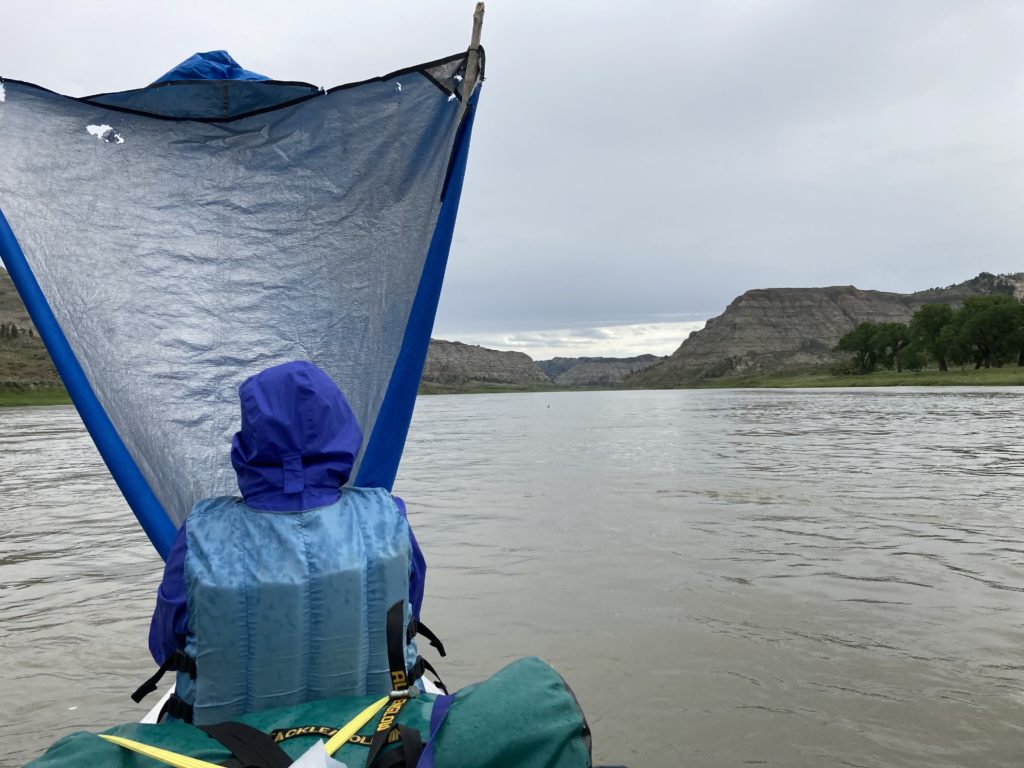The Lost Season

Remember 2020? A lost season best forgotten. Why? Because the Novel Coronavirus and COVID-19, the illness it causes, swept the world, putting life on hold.
And so it was for the Windleblo.
Up until 2020, an average of more than 2,000 nautical miles passed below Windleblo’s keel each season. In 2020, the sum total was 2.4 nm. That’s the distance from the dock to the haulout ramp in Petersburg, Alaska. Needless to say, the 2020 cruising plan optimistically conceived pre-COVID and posted on this blog in early January never happened.
After enduring lockdowns, quarantines, and lengthy isolations at home in Colorado from March through July, on August 1st I suited up in extra PPE for the airplane ride to Petersburg. There, I found Windleblo undisturbed, idling quietly in the same slip I left her last Fall, the same knots securing her to the dock. I spent the next few days readying her for the move to the winter storage yard.
As recently as mid-July, though, it wasn’t clear where the move would go. It turned out that at the end of the 2019 season, John Murgas, owner of the Petersburg Yard, bailed on me at the last minute, claiming that he could not safely haul a Hallberg-Rassy 40 using his hydraulic trailer due to the boat’s deep bulbous keel. This forced a decision — backtrack to Wrangell where they have a proper Travelift to haul the boat or keep the boat in the water for the winter under the watchful eye of the Petersburg harbormaster. I chose the latter, which proved to be a good decision as she hibernated nicely, no worse for wear.
But another winter season afloat seemed a gamble, so I resolved to haul her out for the 2020-21 winter. Several notions influenced this decision. There was no financial incentive for the move – in Petersburg, it’s about the same money to rent a slip for the winter as it is to haul out and pay storage. Some say a boat is intended to float so is best supported by water vs. standing on her keel, an argument in favor of leaving her in the slip for another winter. But my New England upbringing biased me towards winter haulout, not least to keep the boat safe from a big blow or surge. It was this peace of mind element that won out in my thinking, particularly given the distance between me and the boat all winter.
So as spring turned into summer, I investigated haulout options. First, I contacted Andy Gray, the harbormaster at Hoonah, a small village on Chicagof Island, about 100 nm north of Petersburg. There, they have a fairly large municipal marina, complete with Travelift and storage yard. Andy was most welcoming and said he would be able to help me. For a while, this was Plan A, as it would set us up nicely for the start of the 2021 season given that Hoonah is the gateway to Glacier Bay.
But the more I thought about it, the more nervous I got about keeping Windleblo there. First, Hoonah is remote. To get there, one needs to add either an infrequent ferry or an expensive float plane ride to the end of an airplane trip to Juneau. The remoteness also limits availability of parts and services to fix any spring commissioning problems, potentially a big deal. Memories of waiting for parts in Sidney, BC, and Souris, PEI, come flooding back when weighing this factor.
On the way north, we had passed through Wrangell, just 40 nm south of Petersburg through the Wrangell Narrows. There, I had seen the Travelift and Yard and met some of the people. Though I didn’t get the same welcoming warm fuzzies as in Petersburg or Hoonah, I knew the facility was more than adequate. Plus, Wrangell is a larger town with jet service from Seattle and a fairly large fishing fleet with the attendant parts and services. I called the Wrangell harbormaster’s office. The helpful female voice on the other end assured me they would have a spot for me. I scheduled a haulout appointment with her for August 6th.

About a week before the trip to Petersburg, I was reviewing my notes from 2019 and noticed that John Murgas had said he would be upgrading his equipment in 2020 to be able to handle larger boats, including boats with deep bulbous keels. Almost as an afterthought, I emailed him to see if he indeed had completed the upgrade and, if so, could he now haul my boat. He responded fairly promptly, writing that he had not made the improvement but that, upon reflection, he was confident he could haul the Windleblo now with his existing equipment. I asked him what had changed that gave him this confidence and he vaguely replied that he now had more experience, a response that did not give me much comfort. None-the-less, I scheduled an appointment with him to haul out at his Yard at high tide on Wednesday, August 5th. (Last year, I had vetted the suitability of his equipment with Hallberg-Rassy who assured me it was adequate to do the job.) He said they would give it a try then and would know quickly using their hydraulic trailer’s underwater camera whether it would work. I did not cancel the Wrangell appointment!
With the haulout plans in place and my arrival in Petersburg complete, my attention turned to readying the boat for the move. Thankfully, all my checks of the boat’s condition revealed no problems. Only systems essential for the short trip to the ramp were activated, leaving many systems mothballed, e.g., domestic water, most instruments, sails. That left only removing and stowing the winter cover and testing the depth finder and diesel engine before leaving the dock. All went smoothly as I shoved off precisely 30 minutes before the scheduled haulout time. I pointed Windleblo south through the misty channel. Though extremely brief, the time at the wheel brought joy mixed with sorrow as I pined for more and lamented a lost season.
Turning toward the ramp, John guided me into the trailer via the VHF radio, confirming in the final moments that the underwater camera showed a perfect fit. Minutes later, Windleblo was out of the water, resting securely on the trailer. There she stayed until the next morning when she was power washed and moved to her assigned slot for the winter. All that was left was winterizing the engine and reinstalling the winter cover.
At week’s end, I boarded a plane for the return trip to Denver. As I lifted off the runway, a feeling of ennui and despair overcame me. What a squander 2020 was! Keeping Windleblo on-the-hard was like relegating a thoroughbred to the barn!
Looking back on the lost season, there was a small consolation. In June, Jocelyn and I went on a float trip through the Upper Missouri River Breaks National Monument. We figured the only way to safely get out of Dodge and escape the virus was to go to the middle of nowhere. So we drove 13 hours to Fort Benton, Montana, for a week-long voyage through 120 river miles of Wild and Scenic designated wilderness. It wasn’t the Windleblo but rather our trusty Blue Hole canoe that carried us. We hadn’t splashed her since christening the Windleblo 11 seasons ago! As luck would have it, we enjoyed following breezes for two of the six days on the river. Sailors forever, we rigged an improvised sail to pull us along.
You take what you can get.


Comments
The Lost Season — No Comments
HTML tags allowed in your comment: <a href="" title=""> <abbr title=""> <acronym title=""> <b> <blockquote cite=""> <cite> <code> <del datetime=""> <em> <i> <q cite=""> <s> <strike> <strong>